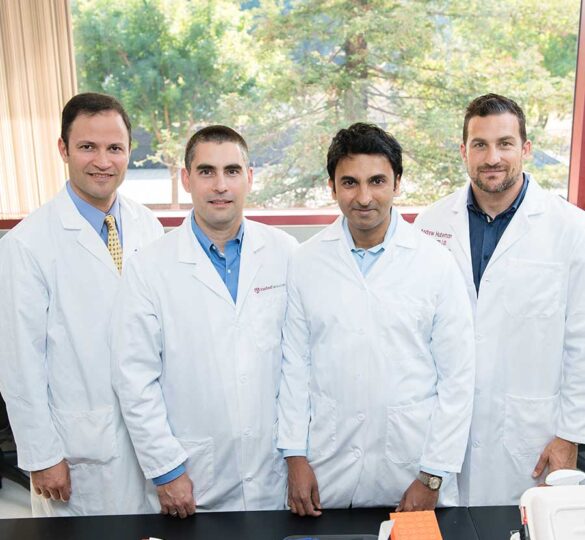New Priorities for Glaucoma Research
New approaches to treating, managing, and even curing glaucoma are essential to patients and caregivers. Researchers are actively working to advance the field in several key areas.

Glaucoma is a complex disease in which damage to the optic nerve leads to progressive vision loss. Currently, there is no way to restore vision lost to glaucoma.
At Glaucoma Research Foundation, our mission is to cure glaucoma and restore vision through innovative research. New approaches to treating, managing, and even curing glaucoma are essential to patients and caregivers.
Researchers are actively working to advance the field of glaucoma research in several key areas.
Neuroprotection
Neuroprotection refers to our ability to keep the retinal ganglion cells alive and bolster their health despite the insult of glaucoma.
Neuroenhancement
Neuroenhancement is the idea that we could give the cells a “booster shot” and take sick cells that aren’t functioning for a patient’s vision and make them more functional again in order to help the patient see better in a short time frame.
Retinal Ganglion Cell Replacement
Retinal ganglion cell (RGC) replacement is being undertaken via two main approaches:
- Endogenous RGC replacement involves utilizing already existing cellular sources for RGC replacement, such as Müller glia, retinal pigment epithelial cells, and stem cells. This requires strategies to promote efficient reprogramming of such cells so they can become full-fledged RGCs.
- Exogenous RGC replacement involves using outside sources to generate RGCs, such as induced pluripotent stem cells. Such donor cells can be derived in unlimited numbers and can be directed to generate retinal cell precursors that under specific conditions can be programmed into RGCs.
Optic Nerve Regeneration
Optic nerve regeneration involves stimulating axons to grow across an optic nerve injury site to appropriate target areas in the brain, while at the same time preventing abnormal growth.
Vision Restoration
Vision restoration involves returning vision that already has been lost due to glaucoma. This usually relies on the brain’s plasticity (ability to reorganize to retain certain functions).
Posted on September 2, 2018; Reviewed on March 17, 2022.